Guidelines on 4 Steps to Develop a STEM Lesson in Secondary Schools in Vietnam
Guidelines on 4 Steps to Develop a STEM Lesson in Secondary Schools in Vietnam
Based on subsection 1, Section 4 of Official Dispatch 3089/BGDDT-GDTrH in 2020 guiding the Development and Implementation of STEM lessons:
Development and Implementation of STEM Lessons
1. Process of Developing STEM Lessons
a) Step 1: Select the Teaching Content
Based on the knowledge content in the subject program and phenomena, processes associated with that knowledge in nature, society; procedures or technological devices applying that knowledge in practice to select the content of the lesson.
b) Step 2: Identify the Problem to be Solved
Identify the problem to be solved and assign it to the students so that when solving this problem, students have to learn the necessary knowledge and skills in the chosen subject program or apply the known knowledge and skills to develop the lesson.
c) Step 3: Develop Criteria for the Product/Solution to Solve the Problem
Clearly define the criteria for the solution/product as an important basis for proposing a scientific hypothesis/solution to the problem/design a product model.
d) Step 4: Design the Process of Organizing Teaching and Learning Activities.
- The process of organizing teaching and learning activities is designed according to active teaching methods and techniques with learning activities encompassing the steps of the technical process.
- Each learning activity is clearly designed in terms of objectives, content, expected learning products that students must complete, and ways to organize learning activities. These learning activities can be organized both inside and outside the classroom (at school, at home, and in the community).
- It is necessary to design electronic lessons online to guide and support students' learning activities outside the classroom.
The 4 steps to develop a STEM lesson for secondary schools are as follows:
Step 1: Select the teaching content;
Step 2: Identify the problem to be solved;
Step 3: Develop criteria for the product/solution to solve the problem;
Step 4: Design the process of organizing teaching and learning activities.
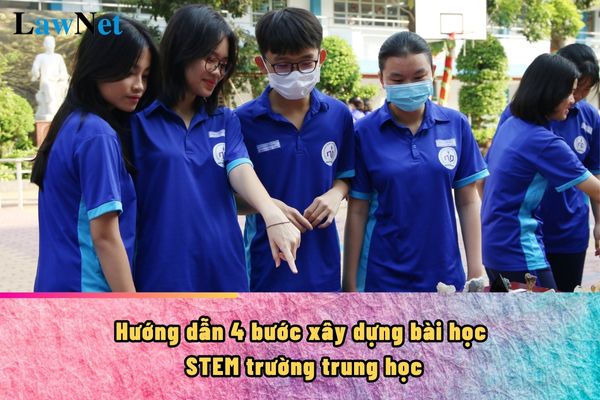
Guidelines on 4 Steps to Develop a STEM Lesson in Secondary Schools in Vietnam (Image from the Internet)
What are sources of training materials for STEM education in secondary schools in Vietnam?
Based on subsection 1, Section 6 of Official Dispatch 3089/BGDDT-GDTrH in 2020:
Implementation Organization
...
1. Ministry of Education and Training
a) Provide training materials for the implementation of STEM education in secondary education online at the address: http://stem.sesdp2.edu.vn for educational management levels and general educational institutions to refer to, proactively use to organize training for teachers and educational management officials.
b) The training materials include videos, illustrative lessons, illustrative lectures, documents, activity requirements, and a system of assessment questions, designed into lessons that can be posted online.
...
Therefore, STEM training materials for secondary education can be found at the address: http://stem.sesdp2.edu.vn.
What are regulations on the engineering design process for constructing contents of STEM lesson in secondary schools in Vietnam?
Based on subsection 1, Section 3 of Official Dispatch 3089/BGDDT-GDTrH in 2020 guiding the content of STEM education for secondary schools in the form of STEM lessons:
- The content of STEM lessons is within the general education program, connected with societal issues.
+ The content of STEM lessons is connected to practical societal, scientific, and technological issues, and students are required to find solutions to solve these issues, gain knowledge, and meet the learning requirements.
+ The knowledge content of the lessons belongs to one subject or a number of subjects in the program; ensuring that the issue is addressed relatively completely.
- STEM Lessons Based on the Engineering Design Process
+ STEM lessons are built based on the engineering design process with a progression of 8 steps: problem identification; research basic knowledge; propose solutions; choose solutions; build models (prototypes); test and evaluate; share discussions; adjust designs.
+ The structure of STEM lessons can be divided into 5 main activities, clearly showing the 8 steps of the engineering design process as follows:
++ Activity 1: Identify the problem or requirement to create a product application associated with the lesson content with specific criteria.
++ Activity 2: Research basic knowledge (including knowledge in the lesson needed to solve the problem or create products according to the requirements) and propose design solutions to meet the stated criteria.
++ Activity 3: Present and discuss the design plan, using basic knowledge to explain, prove, and choose the best plan (in case there are multiple plans).
++ Activity 4: Create the product according to the chosen design plan; test and evaluate during the creation process.
++ Activity 5: Present and discuss the created product; adjust and complete the initial design.
- The teaching method involves students in discovery and exploration activities, action-oriented
+ Students' learning activities are designed to be open regarding implementation conditions but specific about the product criteria to be achieved.
+ Students' learning activities are transferred and cooperative; the decision on the problem-solving solution is up to the students.
+ Students engage in information exchange activities to share ideas and redesign their prototype if necessary.
+ Students self-adjust their ideas and build their discovery and exploration activities.
- The form of teaching should engage students in constructive activities, enhancing group activities, self-reliance in learning new knowledge, and applying knowledge to solve problems.
+ The form of organizing STEM lessons can be flexible, combining activities inside and outside the classroom but still ensuring the teaching objectives of the knowledge content in the program.
+ Enhance group activities to develop communication and cooperation skills in students but must clearly specify the individual tasks and specific products of each student within the group.
- Teaching equipment should focus on the use of available, easily accessible, low-cost technology.
+ Maximally use available devices included in the minimum teaching equipment list as prescribed.
+ Increase the use of household materials, available, low-cost, and safe technology tools.
+ Encourage the use of additional digital resources, virtual experiments, simulations, software, easily accessible for use in and out of the classroom for students to actively learn.

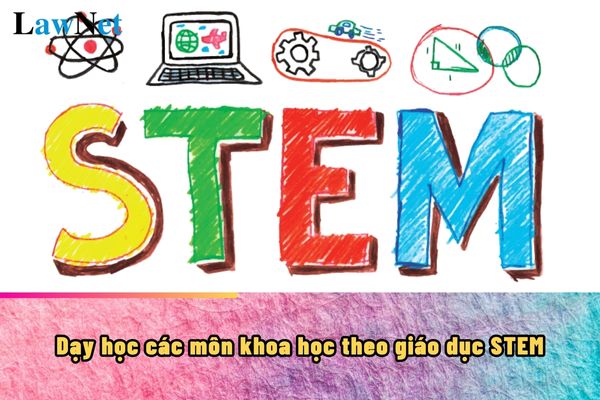


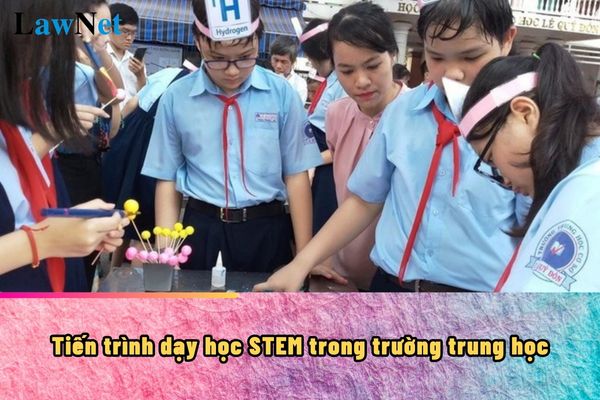
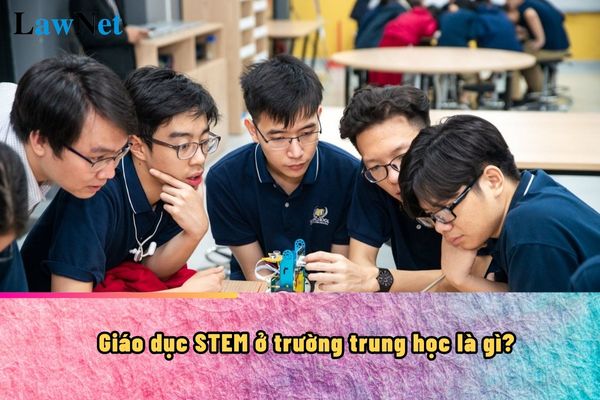
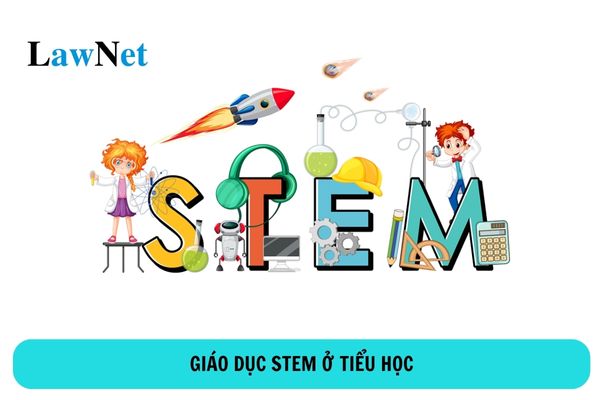

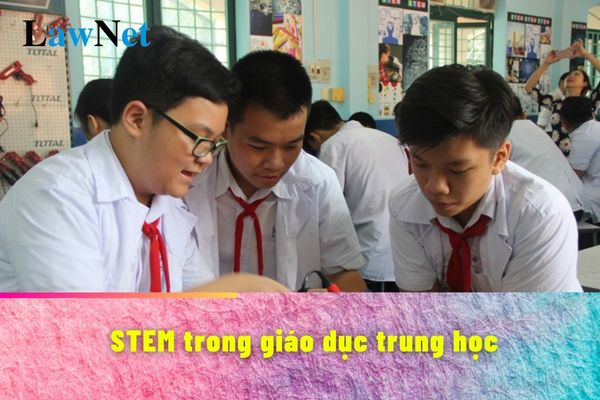

- Plan for Organizing Professional Training for English Teachers in Ho Chi Minh City
- Vietnam: What are the sample outlines of a social argumentative essay on kindness for 9th-grade students? What are the kindness qualities required for 9th-grade students?
- Vietnam: What are the sample argumentative essays on respecting people's differences for 11th-grade students? What are the conditions for 11th-grade students to be eligible for grade advancement?
- Are students pursuing dance in Vietnam eligible for tuition reduction?
- What are the standards for facilities of a Center for Continuing Education and Vocational Education in Vietnam?
- What are the conditions for a foreign educational institution to establish a representative office in Vietnam?
- What is the term of office of the principal of an intermediate school in Vietnam?
- What are the eligibility criteria for applying to an upper-secondary boarding ethnic school in Vietnam?
- Vietnam: What are the conditions for establishing a boarding ethnic secondary school from November 20, 2024?
- Do primary school students have to pay tuition? Who are the students eligible for tuition exemption in Vietnam?

